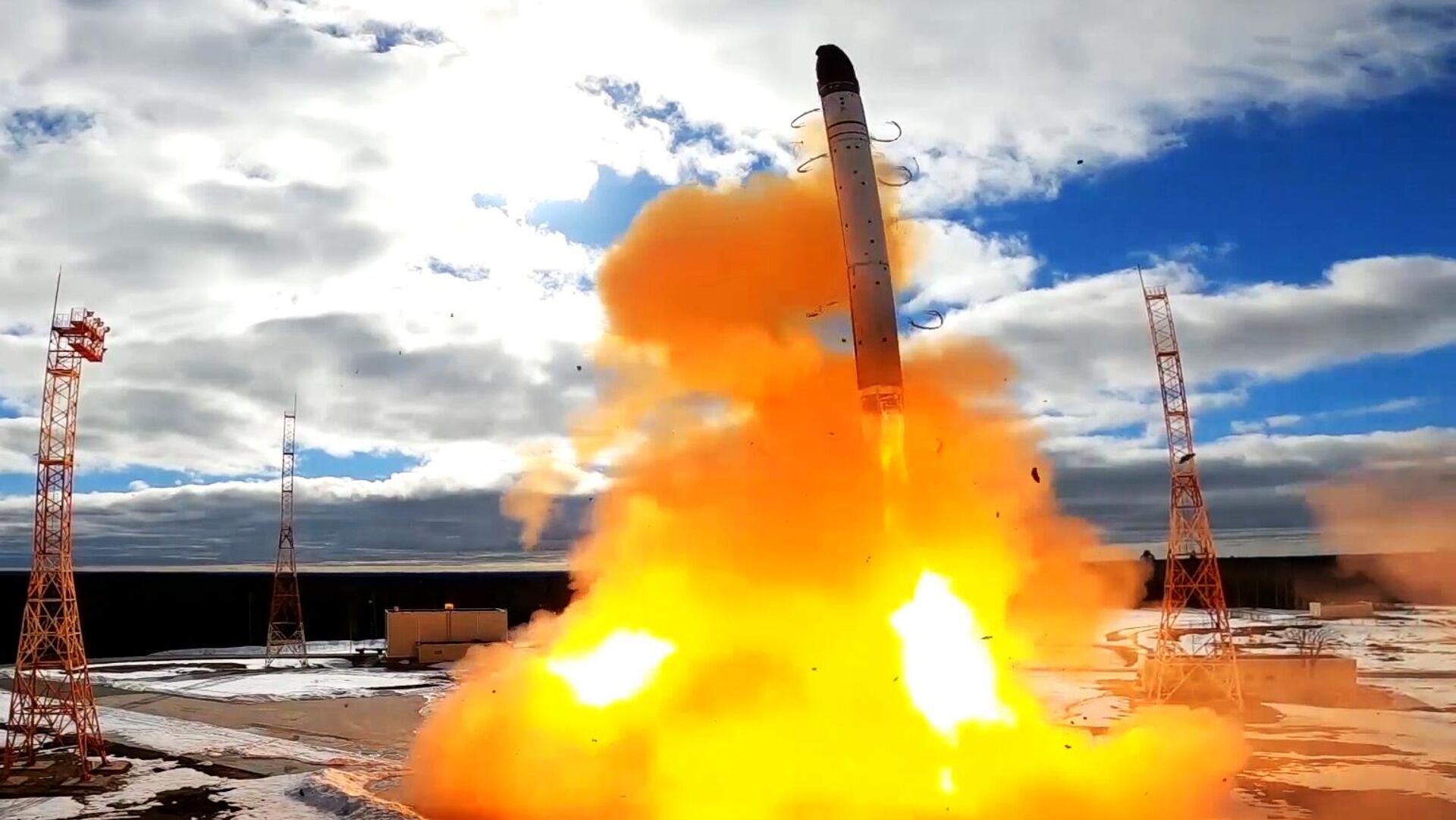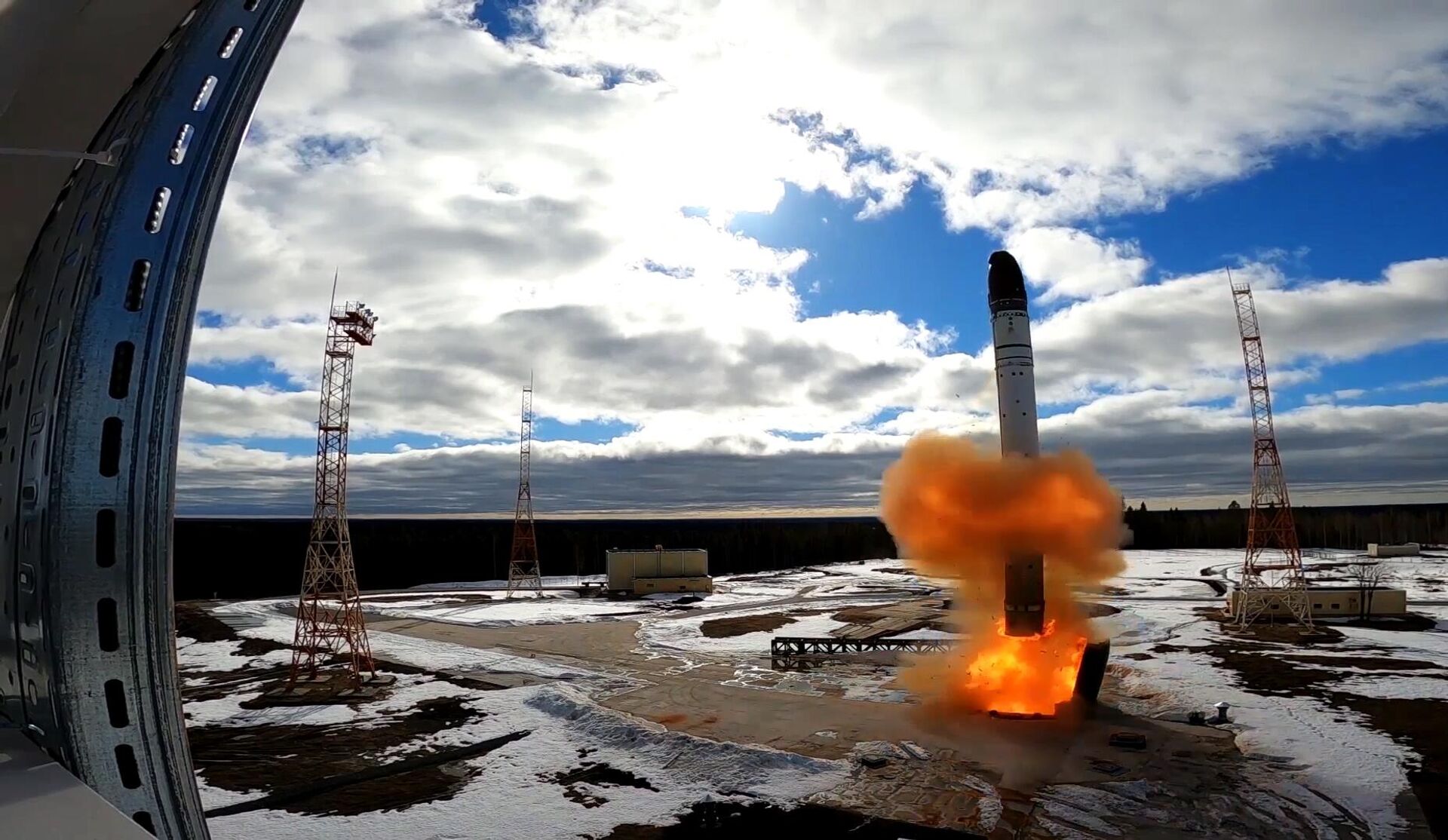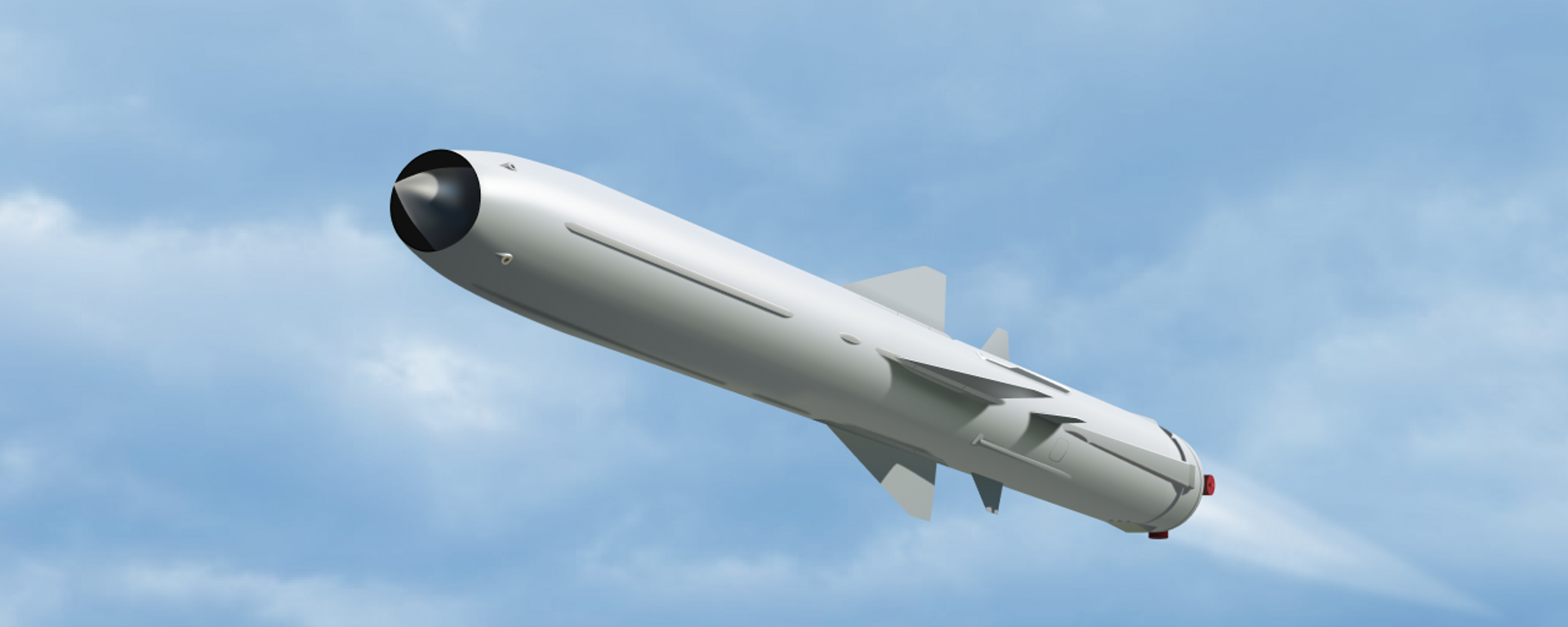https://sputniknews.in/20230901/russias-sarmat-strategic-missile-system-put-on-combat-duty-all-you-need-to-know-3979530.html
Russia’s Sarmat Strategic Missile System Put on Combat Duty: All You Need to Know
Russia’s Sarmat Strategic Missile System Put on Combat Duty: All You Need to Know
Sputnik India
Russia’s Sarmat ICBM has been placed on combat duty, the head of Russian state space corporation Roscosmos said on Friday. Sputnik India explains what is RS-28 Sarmat and why it is called one of the deadliest nuclear missiles.
2023-09-01T17:01+0530
2023-09-01T17:01+0530
2023-09-01T17:01+0530
russia
russian armed forces
roscosmos
intercontinental ballistic missile (icbm)
ministry of defence (mod)
ukraine armed forces
ukraine
nuclear weapons
rs-28 sarmat
strategic deterrent
https://cdn1.img.sputniknews.in/img/07e7/09/01/3977647_0:0:1545:870_1920x0_80_0_0_d0787ef314da95c1cb43a984694c399f.jpg
The RS-28 Sarmat is Russia's next-generation intercontinental ballistic missile (ICBM) that is set to become the backbone of the country's silo-based strategic deterrent. With its impressive range and destructive power, the Sarmat is considered one of the deadliest nuclear missiles in the world. Sputnik India explains what is Rs-28 Sarmat and why it sends shivers through western media outlets, who often refeer to it as 'Satan II'.The Birth of the SarmatThe development of the Sarmat missile can be traced back to 2011 when the Makeyev Design Bureau initiated the initial work on this groundbreaking weapon. However, it was the political events of 2014, such as the Maidan coup d'etat in Kiev, that significantly accelerated the project. The coup severed Russia's collaboration with Ukraine's military-industrial complex, which had previously been responsible for the creation of heavy, long-range strategic missiles.Unleashing the Devil: What Is RS-28 Sarmat?The RS-28 Sarmat is a three-stage, liquid-fueled ICBM equipped with multiple independently targetable reentry vehicles (MIRVs). The missile can be armed with 10-15 warheads or a combination of warheads and countermeasures, including dummy warheads to confuse enemy missile defenses. Additionally, the Sarmat can carry up to two dozen Avangard hypersonic glide vehicles, making it an even more formidable weapon.Sarmat's Response to Prompt Global StrikeThe Sarmat missile system is Russia's response to the Prompt Global Strike (PGS) concept developed by Pentagon planners. Russia aims to deter any potential surprise attacks by showcasing its devastating response capabilities.Who Coined the Name 'Satan II'?While NATO designates the Sarmat missile as the 'SS-X-29' or 'SS-X-30', Western media has often referred to it as 'Satan II'. This name is derived from the NATO reporting name 'SS-18 Satan', which was used for the R-36M missile system that the Sarmat is set to replace. The 'Satan II' moniker plays on the terrifying associations of evil and suffering, capturing the attention of the media and the public.US Minuteman vs. Russian SarmatIn terms of comparison with the US strategic missile system, the Minuteman LGM-30 is the closest counterpart to the Sarmat. The Sarmat gives Russia an edge in terms of its extended range and payload capacity.
https://sputniknews.in/20230725/shoot--forget-how-fast-is-the-oniks-missile-3176960.html
russia
ukraine
us
Sputnik India
feedback.hindi@sputniknews.com
+74956456601
MIA „Rossiya Segodnya“
2023
Sputnik India
feedback.hindi@sputniknews.com
+74956456601
MIA „Rossiya Segodnya“
News
en_IN
Sputnik India
feedback.hindi@sputniknews.com
+74956456601
MIA „Rossiya Segodnya“
Sputnik India
feedback.hindi@sputniknews.com
+74956456601
MIA „Rossiya Segodnya“
rs 28 sarmat, sarmat strategic missile system, deadliest nuclear missile, rs 28 sarmat missile, rs-28 sarmat range, satan w missile, satan ii missile, rs 28 sarmat test, rs 28 sarmat india, rs 28 sarmat india buy, rs 28 sarmat upsc, rs-28 sarmat speed, rs-28 sarmat test, rs-28 sarmat price, rs-28 sarmat satan 2,
rs 28 sarmat, sarmat strategic missile system, deadliest nuclear missile, rs 28 sarmat missile, rs-28 sarmat range, satan w missile, satan ii missile, rs 28 sarmat test, rs 28 sarmat india, rs 28 sarmat india buy, rs 28 sarmat upsc, rs-28 sarmat speed, rs-28 sarmat test, rs-28 sarmat price, rs-28 sarmat satan 2,
Russia’s Sarmat Strategic Missile System Put on Combat Duty: All You Need to Know
Russia’s Sarmat strategic missile system has been placed on combat duty, the head of Russian state space corporation Roscosmos said on Friday. Sputnik India explains what is RS-28 Sarmat and why it is called one of the deadliest nuclear missiles.
The RS-28 Sarmat is Russia's next-generation intercontinental ballistic missile (ICBM) that is set to become the backbone of the country's silo-based strategic deterrent.
With its impressive range and destructive power, the Sarmat is considered one of the deadliest nuclear missiles in the world.
Sputnik India explains what is Rs-28 Sarmat and why it sends shivers through western media outlets, who often refeer to it as 'Satan II'.
The development of the Sarmat missile can be traced back to 2011 when the Makeyev Design Bureau initiated the initial work on this groundbreaking weapon.
However, it was the political events of 2014, such as the
Maidan coup d'etat in Kiev, that significantly accelerated the project. The coup severed Russia's collaboration with Ukraine's military-industrial complex, which had previously been responsible for the creation of heavy, long-range strategic missiles.
In April 2022, the missile was successfully test-launched from the Plesetsk Cosmodrome. Subsequently, a state contract was signed in August for the mass production of the missiles. The Krasnoyarsk Machine-Building Plant (KrasMash) took charge of production, and the first Sarmat missiles are expected to be delivered to the military and deployed for combat duty by the end of 2023.
Unleashing the Devil: What Is RS-28 Sarmat?
The RS-28 Sarmat is a three-stage, liquid-fueled ICBM equipped with multiple independently targetable reentry vehicles (MIRVs).
The operational range of RS-28 Sarmat is up to 18,000 km allows it to target almost any location on Earth.
The missile can be armed with 10-15 warheads or a combination of warheads and countermeasures, including dummy warheads to confuse enemy missile defenses.
Additionally, the Sarmat can carry up to two dozen Avangard hypersonic glide vehicles, making it an even more formidable weapon.
Sarmat's Response to Prompt Global Strike
The Sarmat missile system is Russia's response to the
Prompt Global Strike (PGS) concept developed by
Pentagon planners.
PGS proposes preemptive conventional massed cruise missile strikes to disarm an adversary and eliminate its leadership. This concept, unveiled after the US withdrew from the Antiballistic Missile Treaty with Russia in 2002, prompted Moscow to develop advanced weapons, including hypersonic missiles and glide vehicles, and ultimately, the Sarmat.
Russia aims to deter any potential surprise attacks by showcasing its devastating response capabilities.
Each warhead of the RS-28 Sarmat is estimated to have an explosive power of up to 500 kilotons, equivalent to leveling a major metropolitan area. To put this into perspective, the nuclear attacks on Hiroshima and Nagasaki in 1945 had an explosive power of 15 and 21 kilotons, respectively. The destructive potential of the Sarmat is unparalleled, and it serves as a potent deterrent against any aggression directed towards Russia.
Who Coined the Name 'Satan II'?
While
NATO designates the Sarmat missile as the 'SS-X-29' or 'SS-X-30', Western media has often referred to it as 'Satan II'.
This name is derived from the NATO reporting name 'SS-18 Satan', which was used for the R-36M missile system that the Sarmat is set to replace.
The 'Satan II' moniker plays on the terrifying associations of evil and suffering, capturing the attention of the media and the public.
US Minuteman vs. Russian Sarmat
In terms of comparison with the US strategic missile system, the Minuteman LGM-30 is the closest counterpart to the Sarmat.
However, the Minuteman has a shorter operational range of up to 13,000 km and a smaller throw weight. The US primarily relies on its fleet of nuclear-armed submarines for its heaviest nuclear firepower.
The Sarmat gives Russia an edge in terms of its extended range and payload capacity.



